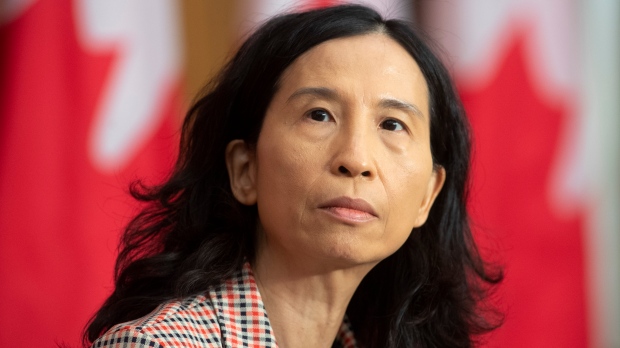
Dr. Theresa Tam, Canada’s chief public health officer, presented Canada’s annual report on the state of public health in the country, which outlines the “heavy toll” COVID-19 has had on Canada’s health-care system and how it has put a “spotlight” on the inequities in society.
“There are people that have been disproportionately impacted by this pandemic,” Dr. Tam said at a press conference on Wednesday. “The virus didn’t create new inequities in our society, it exposed them and underscored the impact of our social policies on our health status.”
“No one is protected until everyone is protected.”
She stressed that the impact of COVID-19 in Canada has “worsened” the systems that “stigmatize populations through racism, ageism, sexism and others who have been marginalized through structural or social factors.”
Canada’s chief public health officer said reports globally show the differences in people who get COVID-19 and the severity of their illness is connected to health and social inequalities, which is also linked to factors like income, the type of work people do, how many people they live with and if individuals are dependant on others in their day-to-day life.
Some of the other points in the report include:
Residents in long-term care facilities account for about 80 per cent of COVID-19-related deaths, one of the highest fatality rates among other OECD countries;
Essential workers experience a higher risk of exposure in their work environment and while commuting to and from work;
COVID-19 has a “major impact” on workers with the least bargaining power including non-union, low-wage, female or hourly paid workers;
Confined living conditions can create circumstances where physical distancing, good hygiene and sanitary standards are difficult to maintain and the virus can be more easily spread;
Health-care workers accounted for 19 per cent of COVID-19 cases in Canada by mid-August;
Data collected in Toronto from mid-May to mid-July revealed that racialized populations made up more than 80 per cent of cases, which included people who are Arab, Middle Eastern or West Asian, Black, Latin American, South Asian, Indo-Caribbean and Southeast Asian;
First Nations, Inuit and Metis peoples have “shown leadership, resilience and community collaboration” in their response to COVID-19 resulting lower rates of hospitalization and deaths;
Opioid-related overdose deaths have increased significantly during the pandemic after Canada was able to achieve a 13 per cent increase from 2018 to 2019.
Dr. Tam does see the COVID-19 pandemic as a “catalyst” for collaboration between health, social and economic sectors, as well as efforts across all levels of government, in order to create “structural change” to ensure a “sustained approach” to changes in Canadian society. This includes investment in population and public health research that links across social science and behavioural science to have evidence-based communication.
An example she gave is that support for housing is a “really important” determinant of health, with more people likely to thrive and address health conditions if they have housing security. The same can be said for more supports related to violence against women, shelters, food security, childcare, low-income earners and people with precarious work.
“When we do pandemic planning going forward, it can’t just be health and public health trying to make it known that all other departments and different sectors, and different aspects of society, need to be part of the response,” Dr. Tam said. “We need to…build it in explicitly so that future pandemics and health crises have those other supports that come into play immediately.”
She added that “social cohesion” is important to ensure the public continues to observe the public health measures. This includes public leaders, media, policy makers and civil society organizations demonstrating they are “working together” to share information towards the goal of “getting through this crisis.”































